December 8, 2015 - 00:32

“My Name is Mikael”:
Intersectional Truth Expressed Through Silence in Tomboy
Introduction
“Mikael is the new kid in town. Mikael is making friends. Mikael has a secret.”
These words sit centered on the screen, sentence by sentence, as the trailer plays for Tomboy. The 2011 film follows Mikael, a young person known by his parents as Laure, who has just moved to a new town and must navigate his non-normative gender identity while proving his worth to a new group of young friends. Silence is a fundamental part of the film, appearing through the character of Mikael consistently, whether chosen or imposed (and more frequently a complex mixture of the two). How this silence is read, that is—both by the film’s audience and by Mikael’s friends and family—is another matter. Without question, the language of the trailer itself can have an immense impact on the viewing of Mikael’s silence. By naming the fact that he has a “secret,” the trailer forecloses any possibility for varied interpretations of his silences; the question becomes not “What does his silence say?” but rather, “What is he not saying?”
The film itself opens in silence, as Mikael speeds through the forest, sticking his head out of the sunroof of a car. Though his movement on the open road creates a strong sense of freedom, the silence (which persists for a full minute before the first line is spoken by Mikael’s father), seems to mark something concealed, something dangerous. This tension remains in the air throughout the film, as Mikael makes friends (and later develops a romantic connection) with his new neighbor Lisa and her group of playmates, all the while “passing” as a young boy, and refusing to question his mother’s assumptions of his girlhood. When at last Mikael’s mother becomes aware of the self he has been presenting outside of their home, she violently outs him to his friends by putting him in a dress and parading him from house to house. Finally, Mikael finds himself in the woods with his “friends,” who, upon hearing that he may “really” be a girl, take it upon themselves to “check,” and disrobe him without his consent.
Writings by both Adrienne Rich and Elizabeth Ellsworth speak to the complicated themes of truth, silence, and identity that underlie this narrative—and where Rich’s analyses may seem insufficient, Ellsworth’s pick up the slack, questioning and complicating. Ultimately, Ellsworth outlines our human refusal of identity, arguing that it is this constant reaching for more than what established roles and identities can provide that grants us agency as human beings. What becomes increasingly clear looking through the lenses of both Rich and Ellsworth is that Mikael’s truth is not hidden through his use of silence—rather, it is expressed by it. Mikael’s “truth” is an intersectional one—one that exists in a world where he can be not just “transgender” or a “tomboy,” but also a daughter, a brother, a sister, and a friend. However, recognizing the reality that being “out” as any one of these things might, in the minds of those around him, negate all the others, he chooses to remain silent allows others to gender him as they wish. Though he devises the name “Mikael” for himself, his pronouns and gender are not chosen, but instead are assumed by his new friend Lisa.
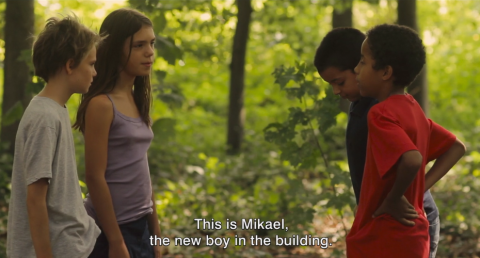
Mikael is a character who is constantly reaching to be more than a single identifier would allow him to be, and thus, the keeping of his “secret” through silence is the very thing that liberates him. When he finally breaks his silence, supposedly “telling the truth” to his mother, it is met with the violent consequence of forced silence and transphobia.
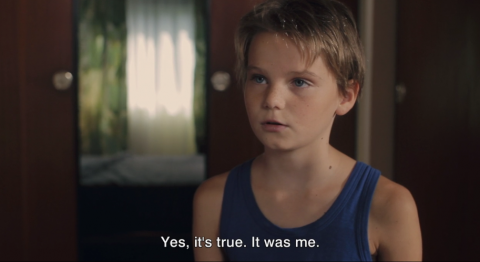
Adrienne Rich on Silence & Truth
Adrienne Rich centers her essay entitled “Women and Honor: Some Notes on Lying” around the responsibility of women to tell the truth. Citing a history of constant silencing, Rich argues that women have learned to lie through omission, often failing to speak their truths as a result of the nurturing qualities trained into them over generations that have demanded they make room for the speech of others. Present throughout her piece is Rich’s resistance to the idea that one should feel free to speak up when finding oneself in a “safe space”—a place where one can expect one’s words to be held and respected. On the contrary, she argues, it is the very risk of sharing one’s truths that creates the “safe space.” As she writes: “When a woman tells the truth she is creating the possibility for more truth around her” (Rich 191).
Though Rich’s piece focuses so directly on the historical oppressions and forced silencing of women, she extends her points toward sexuality and queerness, countering the prevalent argument that many people hide their deviant identities out of necessity and desire for physical and emotional safety. She boldly claims:
“Does a life ‘in the closet’—lying, perhaps of necessity, about ourselves to bosses, landlords, clients, colleagues, family, because the law and public opinion are founded on a lie—does this, can it, spread into private life, so that lying (described as discretion) becomes an easy way to avoid conflict or complication? can it become a strategy so ingrained that it is used even with close friends and lovers?” (Rich 190)
A reading of Tomboy through the lens of Rich would by no means cast the protagonist in a positive light; Mikael remains, for much of the film, in silence, and certainly speak their “truth” to no one—whether this would mean being “out” as a female-bodied person to his new friends, or being “out” as a tomboy/transmasculine/transgender person to his mother. Rich might argue that it is this failure to speak out that ultimately leads to Mikael’s “downfall”—being forced into a dress and dragged between friend’s houses, being outed repeatedly and violently, and almost losing a chance at friendship and romance with Lisa, are all results of Mikael’s keeping his identity hidden (from both his friends and his mother).
Yet a Rich-ian analysis would fail to tell the whole story. To read Mikael’s silence requires an understanding of an identity far more complex than the all-too-common dilemma of “to tell or not to tell”—as this assumes an inherent knowledge of the self that can be easily communicated, in a simple, “coming out” statement, delivered to a generic audience. Media studies theorist Elizabeth Ellsworth serves to complicate and challenge Rich’s demand for constant and complete truth, and in a novel way: by questioning the very idea of “truth” itself, as it is known (or not) by the individual.
Elizabeth Ellsworth on the Impossibility of Truth
In her piece entitled “The Paradoxical Power of Address: It’s an Education Thing, Too,” Elizabeth Ellsworth delves deeply into concepts of “identity” and “truth” in order to better understand modes of address within the classroom. Writing through the lens of education, she problematizes the idea we so take for granted of “knowing oneself.” Citing the field of psychoanalysis, Ellsworth argues that identity is characteristically unstable, leading to selves that are “unruly and unresolved” (O’Shea, qtd. in Ellsworth, 43). As she explains:
“The fact of the unconscious, then, ‘explodes the very idea of a complete or achieved identity’ [. . .] with oneself through consciousness, or with others through understanding. The failures of people to become fully identical with what social norms want us to be, or what we ourselves want to become—those failures are ‘endlessly repeated and relived moment by moment throughout our individual histories” (Ellsworth 44).
What this constant but inevitably futile struggle towards the achievement of identity makes remarkably visible is the insufficiency of language to express oneself—if all we have at our disposal are labels demarcating various identities (that cannot, in reality and totality, be held by any one), no claims about the self can be made that are wholly true. Ellsworth points out:
“It is impossible to say everything, once and of all, in language. Any attempt to say who ‘I am’—to make my language become fully identical with itself and with myself—brings me up against the limits of language, up against the impossibility of language coinciding with what it speaks of, up against the gap between what is spoken and what is referred to, up against language’s inevitable misfire” (44).
So while Adrienne Rich may want us all to tell the whole truth, all of the time, Ellsworth’s words indicate that it is simply impossible to tell the truth (Rich’s later point on “reaching for the truth,” referenced further on in this essay, may prove more accurate here). Language can only serve to approximate what we think we know about ourselves, and even then, we just cannot know ourselves; thus, “speaking our truths” is a mere approximation of an approximation of the truth. This could certainly read as defeatist—if we cannot tell the truth about ourselves, why try at all? And if we do not try to, what could we possibly achieve in the way of growth, in relationships with ourselves and with others?
Ellsworth addresses this frustration. After establishing that “this ‘self’ is what is generated in ‘the gap between what we are supposed to be and what we have in actuality not become’” (in other words, the distance between our realities and the realities implied by the identity markers we intend to subscribe to), she asserts that this discrepancy is not only significant, but essential to our betterment and complexity as human beings. Citing film studies theorist James Donald, Ellsworth makes the claim that:
“in fact, ‘at the very heart of psychic life,’ full and complete self-identity is not only imposible, we actually resist it. There is a resistance to identity—to the perfect fit between social norms and how we feel and what we want [. . .]. This resistance is tied to an often unconscious feeling that we are—we must be—more than the selves that our cultures, our schools, our government, our families, our social norms and expectations are offering us or demanding us to be. It is this resistance to the banalities of normalization that makes agency possible” (95).
Thus, our resistance to even having a truth to begin with is a valuable resistance. We seek to be more than those identities would have us be.
Mikael’s most notable identity conflict is that which he faces in negotiating the roles of daughter and masculine person. Throughout Tomboy, Mikael’s mother expresses discomfort with his expressions of masculinity. When he comes inside wearing make-up, having received a “makeover” from Lisa, his mother rewards him with kind words and an embrace.
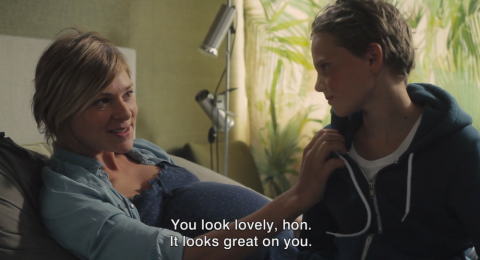
Mikael’s satisfaction with his mother’s positive reaction is clear, and he smiles broadly. Yet his conflict becomes visible when she glances away, and the smile disappears from his face.

Because in his attempts to perform the role of the daughter, Mikael must silence another part of himself—the gender that he identifies with, one of which his mother would never approve. Covered in make-up, Mikael’s conflict bubbles to the surface, and he is left feeling deep discontent. Again, he is confronted with a painful fact: Language cannot do his truth justice. If he chooses in this moment to “come out” to his mother, he will lose their relationship, and face rejection. On the flip side, to be "out" about his identity as a daughter to his new friends would mean losing their trust, as they clearly demonstrate by the end of the film that they cannot handle his female-bodied self.
Resisting labels through remaining silent, therefore, is both a resistance to “speaking the truth” in the conventional, literal manner, and the insistence upon Speaking the Ultimate Truth—one that cannot be expressed through spoken language.
Ultimately, the only character who seems to truly understand Mikael in his totality (as much as this is possible, at least), is his younger sister, Jeanne. The relationship between the two is rife with silence, highlighted from the very beginning of the film in their silent play sessions demonstrating their seamless connection and speechless communication. Jeanne is simply always there, supporting Mikael is his most pained moments of conflict (both with his own body, with his confusing desires, and with his mother).
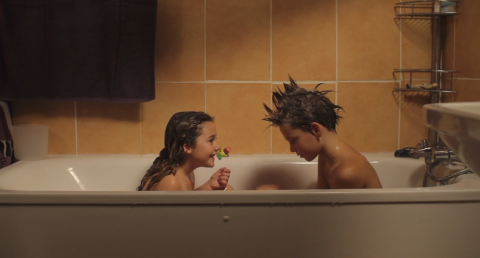
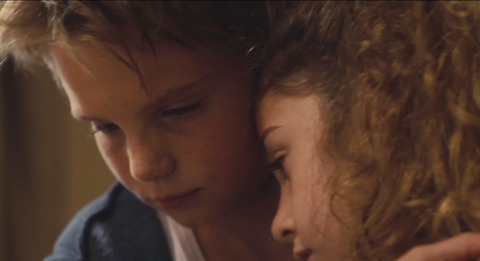
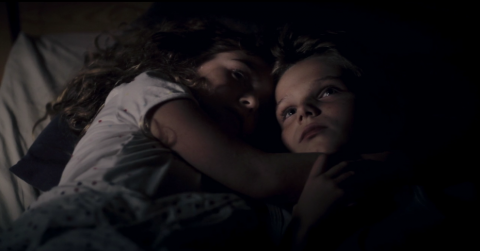
When Jeanne inadvertently discovers that Mikael has been introducing himself as a boy to his new friends, she agrees to share the secret with him—and it quickly becomes an exciting game that the two play, as she stands in solidarity with him (something no other character does over the course of the film, as no one else is able to negotiate Mikael’s roles as daughter, sibling, and transmasculine person).
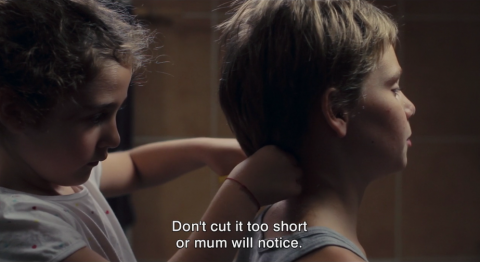
What Mikael and Jeanne’s relationship seems to truly embody is this very rich idea of reaching toward truth—a process that does not inherently rely upon spoken language. Through their shared silences and deep trust for one another, Mikael is supported to live closer and closer to his truth each day. Here, Adrienne Rich’s words seem right on the mark. Put simply:
“It isn’t that to have an honorable relationship with you, I have to understand everything, or tell you everything at once, or that I can know, beforehand, everything I need to tell you.
It means that most of the time I am eager, longing for the possibility of telling you. That these possibilities may seem frightening, but not destructive, to me. That I feel strong enough to hear your tentative and groping words. That we both know we are trying, all the time, to extend the possibilities of truth between us.
The possibility of life between us” (Rich 193-194).
Works Cited
Ellsworth, Elizabeth. “The Paradoxical Power of Address: It’s an Education Thing, Too.” Teaching Positions: Difference, Pedagogy, and the Power of Address. New York: Teachers College, 1997. 37-53. Print.
Rich, Adrienne. “Women and Honor: Some Notes on Lying (1975).” On Lies, Secrets, and Silence: Selected Prose 1966-1978. New York: W. W. Norton, 1995. 185-94. Print.
Tomboy. Dir. Céline Sciamma. Perf. Zoé Héran. Pyramide Distribution, 2011. Netflix.
Tomboy (2011) – Official Trailer [HD]. Perf. Zoé Héran. Triviatrailers. YouTube, 26 Sept. 2011. Web. 7 Dec. 2015.

Comments
reaching towards truth, beyond language
Submitted by Anne Dalke on December 9, 2015 - 09:08 Permalink
smalina—so powerful!
I KNEW Ellsworth would be spot-on for you, though I had no idea what a lovely reading she’d (help you offer) of Mikael.
I’m really left with nothing to say (and, as you know now: a compliment, and site of fullness).